If you want to get something done, ask a busy person.
That is the saying. Still, ask most people why they didn’t get something accomplished, and they will say, “I ran out of time.” Life is hectic, and we are busy. It turns out that some are just better at being busy than others. Structuring your time efficiently and effectively doesn’t come naturally to most. It is an organizational skill that is learned and integrated. It cannot be mastered overnight, requires trial, error, and incremental steps to build a catalog of competence when it comes to time management.
Well Together Now uses the acronym MEET to label the four essential elements that shape your path to wellness (Motivation, Exercise, Eating, Time). For this edition of Coach’s Corner, we will focus on Time.

We all have traveled a path to find wellness. When a client contacts WTN, it is not for lack of trying. In our first meeting, I ask clients to share their history: likes, dislikes, successes, mistakes, hopes, and preferences, etc. Of course, an important topic also becomes scheduling. This is often the most complex of the variables when it comes to MEETing a goal. In fact, for many, it becomes a goal in and of itself.
It always comes back to sustainability. The fact is, we are more likely to stick with a new behavior if we fully integrate it in a manageable, reinforcing manner. That holds true for “fitting it all in.” Here are some tips and tools to get you started if TIME seems to be standing in your way. Remember, the Coach’s Corner series is designed to share ENTRY POINTS, for goal setting and behavior change. While it may seem apparent or simplified, long-term success often requires going back to basics to establish a solid foundation.Use any of these ideas as a reset or a springboard to a Time-based SMART goal:
Use any of these ideas as a reset or a springboard to a Time-based SMART goal:
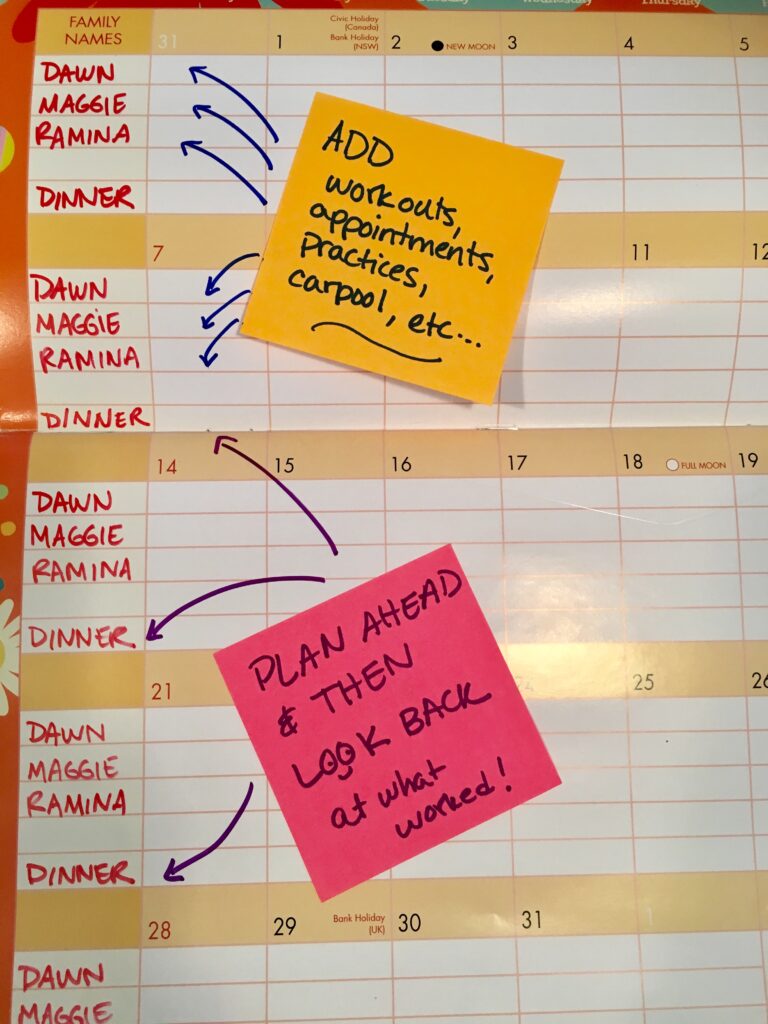
Use a FAMILY CALENDAR. Post activities and meal plans for the week. Keep everyone informed and plan ahead to tackle those busier days. This calendar will serve as double duty as you plan ahead and then use it to look back as a list of what worked and what didn’t. You may find that you want to repeat a particular meal or carpool pattern in the future as activities ebb and flow.
Speaking of LISTS, start using them if you don’t already! One of my go-to apps is Wunderlist. You can use it to create to-dos and lists galore. The app allows you to share lists with other users, so you can see when someone updates the list by adding (better yet completing) items. There are tools to prioritize, sort, set timelines/reminders, assignments, create recurring items, make comments, and more. If you like the feel of paper and pencil, then go for it. Just keep them handy and accessible so you can stay on target.
Now that you’ve got your shopping list, it is time to think PREP and BATCH. No one should have to cook every night. Long days filled with after-school activities, unexpected meetings, appointments, and afternoon workouts leave us scrambling for a quick fix. This can translate to take out or highly processed food options. Leftovers are a beautiful thing for a busy family.
Which leads me to my FAVORITE TOOL, the SLOW COOKER. Invest in a good one! It can open up your afternoons so you will have time to fit in a workout or an appointment.
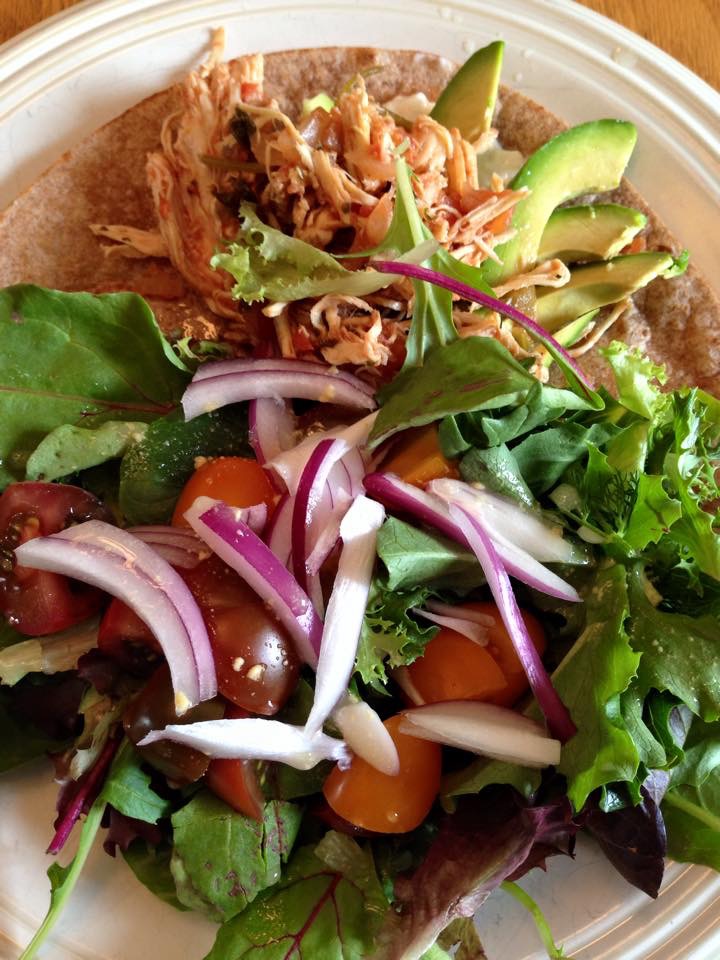
Salsa Chicken 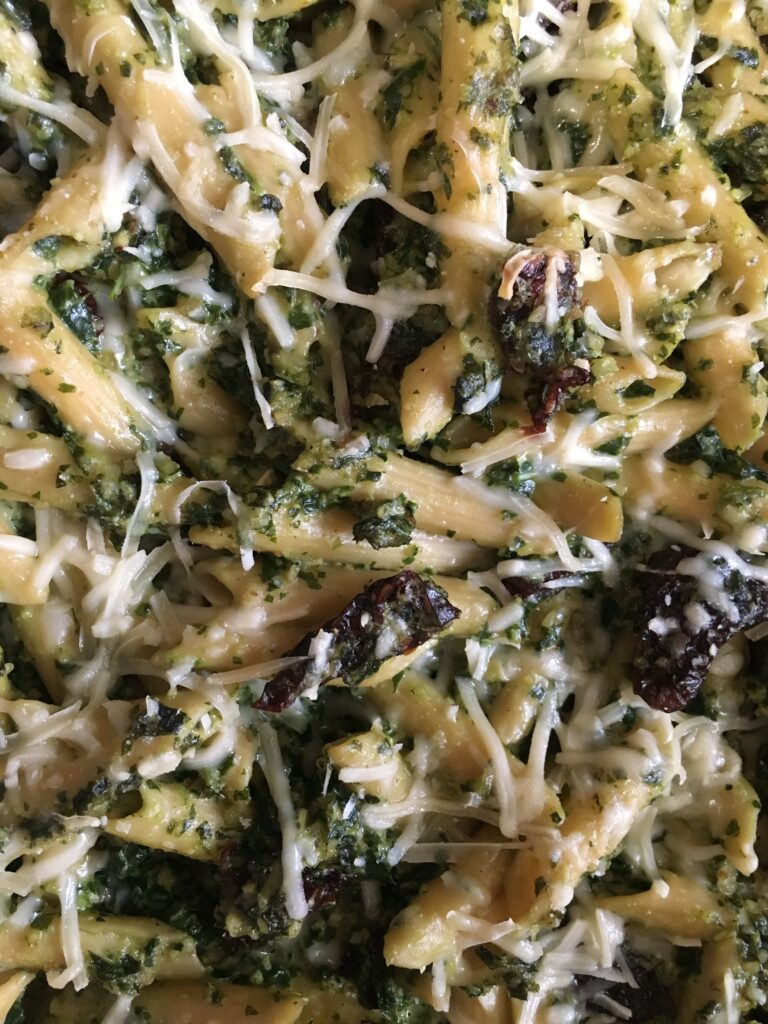
Kale Pesto Pasta 
PB&J Energy Bites
Take a picture; it will last longer. No, really, do it. SAVE WHAT WORKS, toss what doesn’t. I find a visual works best when it comes to cataloging my choices. With cameras in our smartphones, this is a simple task. I created a photo album where I post pictures of meals that worked, with a link to the recipe or name of the book where it came from. That is if I am following a recipe. Otherwise, just a picture will do. I find it is much easier to look back at pictures when making a food plan. It sparks a more vivid memory of the meal and also allows members of the family to make choices for the menu without knowing the name of the meal.
When all else fails, KISS yourself: Keep It Simple Silly. Go back to thinking meat, veg, and grain. Use the grill, quickly steam or sauté a veg and add a quick-cooking whole grain or bread if you desire. Just keep it recipe and stress-free.
SHARE THE LOAD when it comes to meal planning and cooking. Give some tasks to older children. Take turns with your partner doing the shopping, preparation, cooking, or all of the above. It takes a village; start leaning on yours.
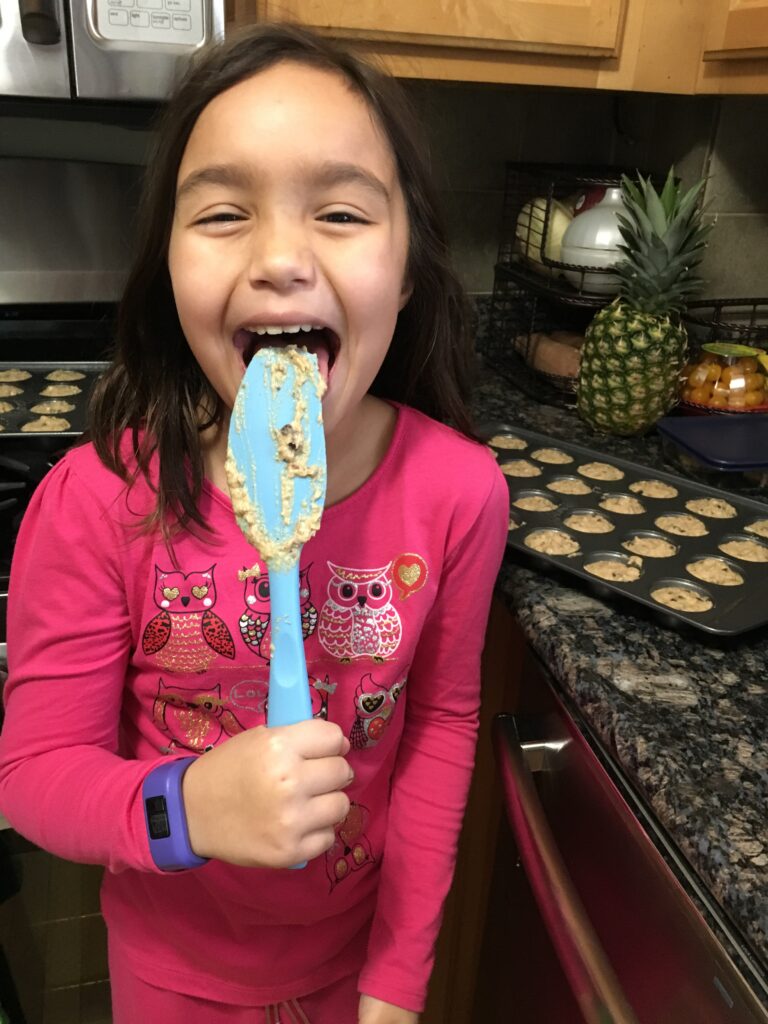
MAKE IT A FAMILY AFFAIR. Set examples for each other and MEET your wellness goals together. It starts in the kitchen with prepping and cooking. It extends to exercise and activity, as well. Take your kid along on their bike when heading out for a run or walk. Use the time while your children are in practice to get yourself moving. Plan ahead with a routine that will work in the time you may spend waiting. (Arrive a little early for pickups and take a brisk walk).
PLAY and get your heart rate up with the family. Whether it is a game or a fun family-friendly workout routine, get it done together, and you won’t feel like you are missing out on time with each other.
On that note, TAKE STOCK of your CHILDREN’S ROUTINES. Are there chores that they are ready to tackle, as they become more involved members of the household team? Simple tasks like making and packing snacks and lunches, folding, and putting away laundry. They will need some guidance in the beginning, but this will be rewarded tenfold in their growing independence and your growing time.
TAKE A POWER LUNCH. Don’t skimp on eating, but if opportunity allows, eat at another time. Use the break to get in a workout. Walk, run, bring some resistance bands to work, or do a bodyweight circuit. Maybe you’ll even inspire or recruit a coworker or two to jump in with you!
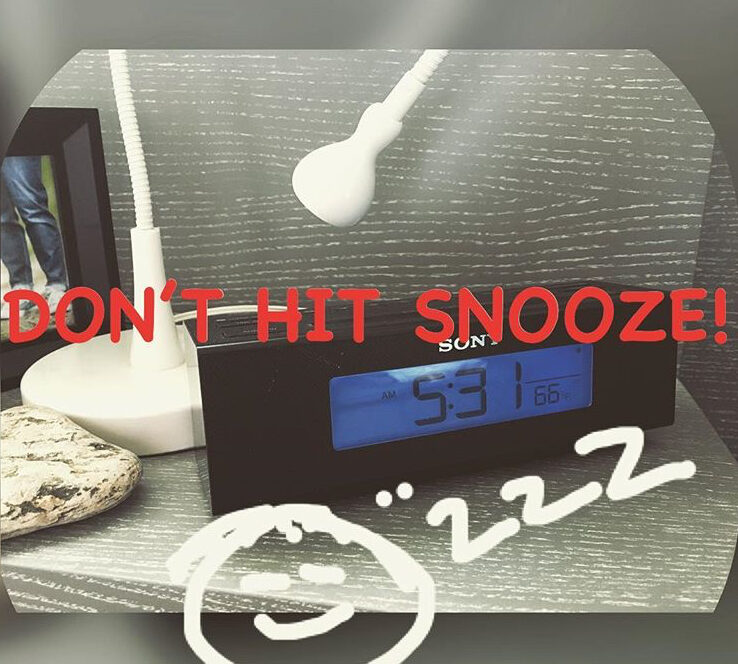
If you can’t make it work at work, then ESTABLISH A ROUTINE that allows you to get it done. If that means setting the alarm to go off a bit earlier, then set it. Snooze is not an option. Start conservatively if you must, back up that rise time a little more each day and prioritize the plan. If you find vigorous movement to be challenging in the early hours, try using that time to tackle some gentler chores that may interfere with an afternoon session. Set the slow cooker. Do some laundry. Answer some emails. Get some dinner prep out of the way. Use this time as it suits you. The idea is to get your workout done or get through other chores that will prevent you from doing it later. Remember, it may not feel like it suits you immediately. Allow yourself an adjustment period where it goes from feeling uncomfortable, to “ok,” to “acceptable,” and ultimately to habit.
Kids asleep? Can’t get to the gym? Or maybe you simply prefer not to work out at a gym. Save yourself the fees and guilt trips for not using the membership more regularly. Take that money and invest it elsewhere. With little space and minimal equipment, you can SET UP AN IN-HOME GYM. Not sure where to begin? We can help with that too.
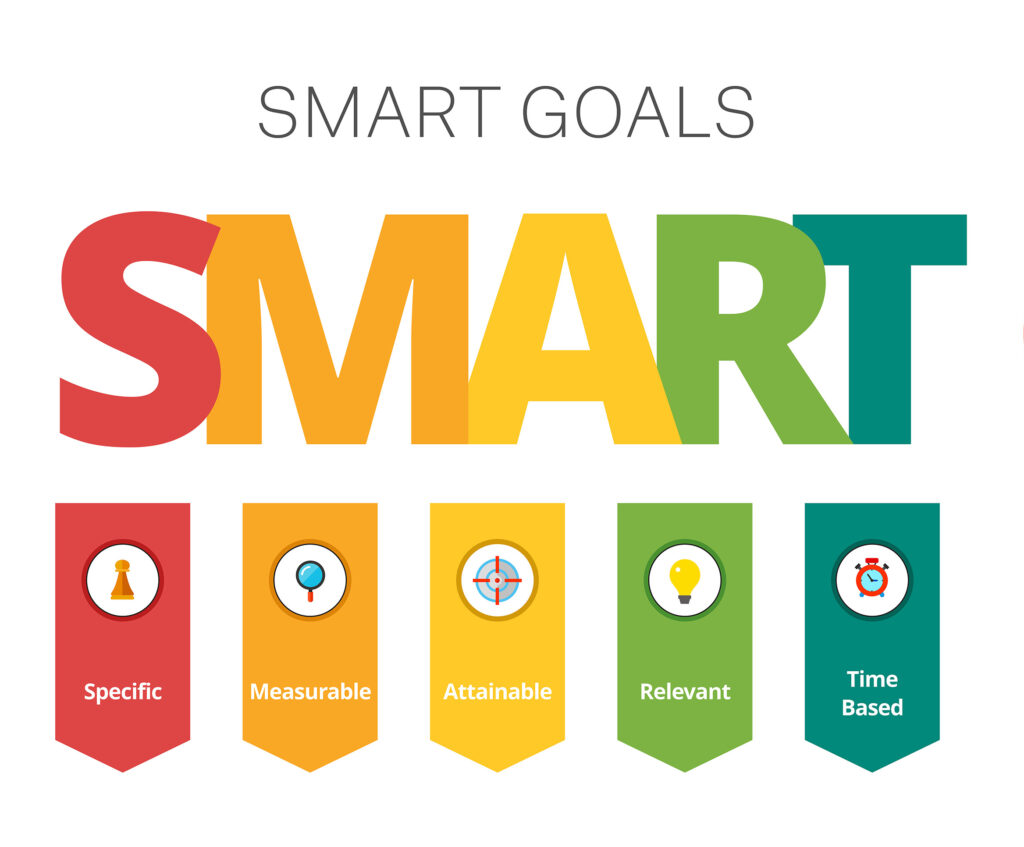
In the end, it is crazy how much time we waste feeling guilty about NOT getting it done. Eliminate waste. Stop the negative cycle. It is time to start building it into the plan. There is no magic bullet. Just remember not to make the on-ramp too steep. In other words, don’t try to do it all at once. Set your SMART goal and start tracking your progress. It won’t be long before you establish some positive momentum and reap the rewards of continued wellness.
It seems the more I do, the more efficient I am at getting things done. This is a result of practice. I hope you feel that the time it took to read this post was well spent. Go after your goals. We can help you find the time to MEET them.

